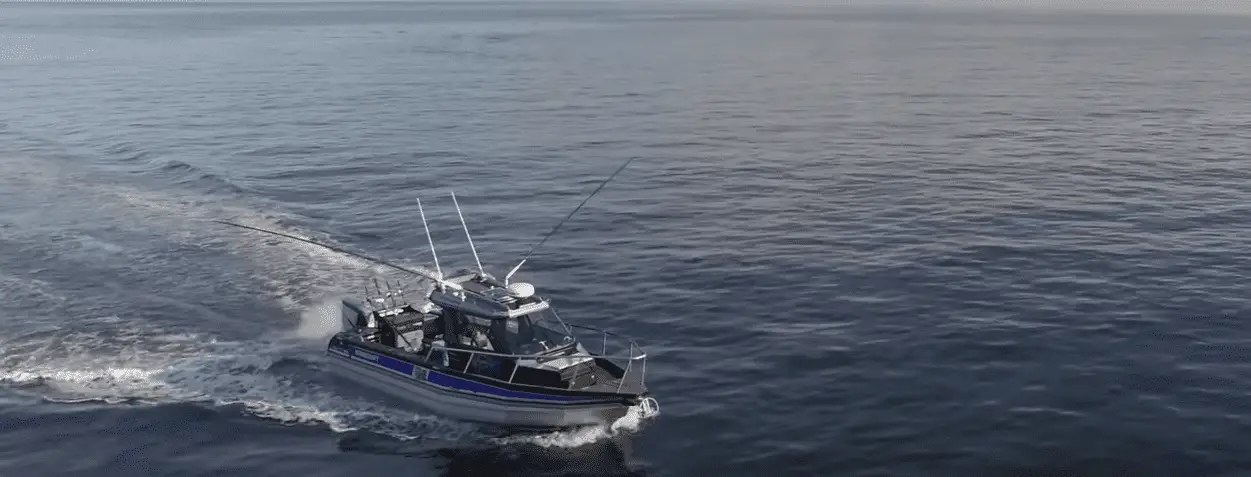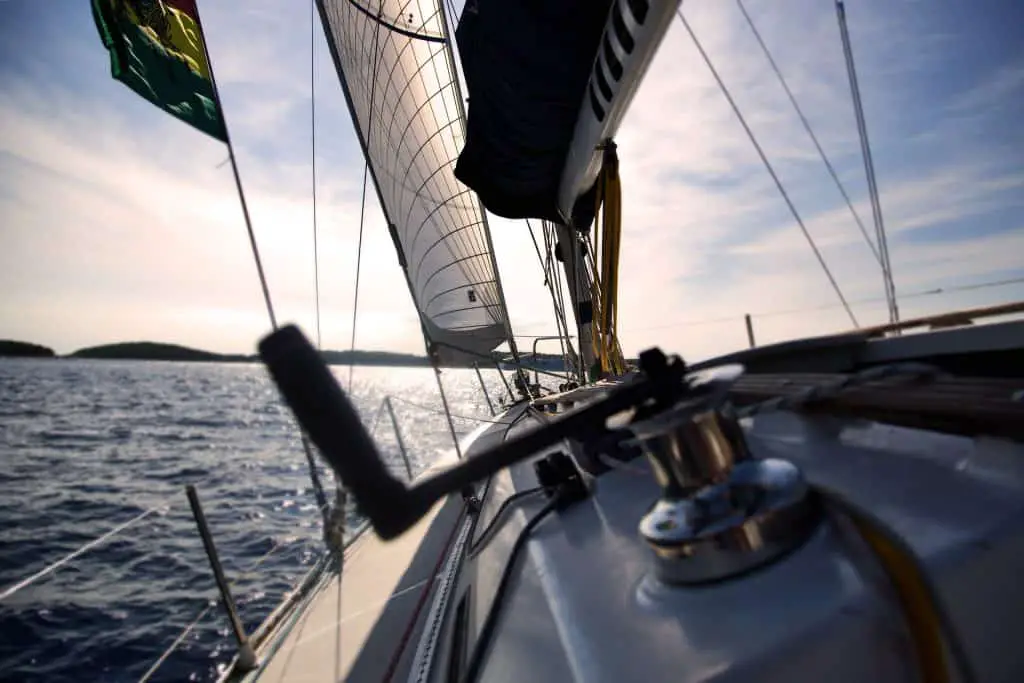Maybe the outcomes of your fishing trips are becoming a little underwhelming. On a good day, four or five fish might be your max, and there’s really nothing wrong with those numbers. But if you want to improve your results, you might want to consider an outrigger.
Yeah, you’ve seen them before. They’re those long poles that run parallel to a fishing boat on either side. And although they might look like they were designed to just improve balance, they actually serve a bigger purpose than that. So exactly what are outriggers used for on a fishing boat? Here’s what you need to know.
What is a Boat Outrigger?
A boat outrigger is essentially a set of poles that extend from your fishing boat. They’re held at a distance from the boat and attach typically to the gunwales. They’re available in a range of lengths and sizes, designed to accommodate different kinds of boats.
While you might usually take your fishing boat a few miles off the coast, a set of boat outriggers should be able to let you travel much farther. This then allows fishermen to do offshore trolling which is known to produce much more fish.
How Do Outriggers Work?
The ultimate purpose of an outrigger is to give you something that can hold on to multiple lines at once. During use, outriggers are lowered at an angle so that they sit closer to the surface of the water. They also come equipped with a number of pulleys, quick release clips, and other features that let you operate the lines and reel in your fish.
If you’ve been fishing for a while, you’ve probably already heard of (or even tried) trolling which involves dragging your line and bait under the water while your boat moves at a steady pace. The purpose of trolling is to attract fish since they tend to go for bait that looks alive, instead of just a lure that dangles in the water.
Outriggers help improve the outcomes of trolling because they let you deploy multiple lines all at once. That means you can create the illusion of a school of moving fish, which greatly improves your chances of getting more bites over the course of your fishing time.
Different Outrigger Set-Ups

As you might have expected, there’s more than just one type of outrigger design. And while all of them work to achieve the same outcomes, variations in their details might make some of them a better fit for your preferences than others.
Telescoping vs Fixed Length
The fixed length outrigger is your basic solid pole. They’re great for those who are working on a budget and those who don’t want to spend too much time or money on maintenance and care costs.
While they’re definitely easier to operate (because you really don’t need to make adjustments since they’re fixed), there are dangers associated with longer fixed length poles.
For starters, you’re always going to have to consider their length even when they’re not in use since they can snag into obstacles around your vessel, causing them to break or even damaging your boat.
Another thing about fixed length outriggers is that you’ll also have to consider how they come into play when you park your boat in a slip or a dock. Since they can’t collapse to a smaller, more compact size, they’ll be something of a permanent fixture that adds to the size of your boat.
Then there are telescoping outriggers. These outriggers let you adjust the length so you can navigate the waters without having to worry about getting them caught. That also means you can work with fewer or more lines, depending on what you’re looking to do.
The trade-off however is that telescoping outriggers tend to call for more care and maintenance since they have more moving parts and accessories compared to fixed length designs.
Gunwale vs Hard-Top Mounted
Gunwale mounted outriggers are the most cost-effective choice, ideal for those who might not want to spend too much on their fishing boat addition. On the downside, outriggers that are installed on gunwales will become an obstruction when you want to move around on your boat.
Hard-top mounted outriggers are almost always more expensive, but they make sure that your boat floor area is kept free from any obstructions. A drawback however is that they may be harder to reach since they’re mounted so high up on your boat.
If your outriggers don’t have a feature that lets you adjust them easily, you might have to think up an easy way to access the hard-top to make manual adjustments.
Aluminum vs Fiberglass
Aluminum poles are often the strongest and provide lasting performance you can rely on for years. They’re rugged and robust, and they often look great if you’re into that sort of stuff.
On the other hand, fiberglass or carbon fiber outriggers tend to be lightweight and cost-effective. While they might not be as burly as aluminum outriggers, they’re typically the choice for fishermen who don’t want to overburden their boat with the weight of a heavy set of outriggers.
How Much Do Outriggers Cost?
With the kind of benefits that outriggers bring, you might just be itching to get your hands on a set. But before you head down to your local fishing and boating supply store, you might want to do the math.
So, how much do outriggers cost? Well, that really depends. There are lots factors that can affect the price of a set of outriggers including their design, material, size, and brand. On Amazon, you might be able to find a few that sell for no more than $100, but you get what you pay for.
Then again, other high-end manufacturers can sell their outriggers for over $10,000 which is definitely way more than the average fisherman might be willing to spend. Fortunately, the best ones usually start at $500 up to $2,000.
Aside from the cost of the outrigger itself, you might also want to consider maintenance costs down the line as well as any fees associated with installation.
How to Install a Set of Outriggers
If you consider yourself handy with tools and you’re pretty confident in your DIY-skills, then you might be able to install a set of outriggers on your own. Keep in mind though that most companies that manufacture or sell outriggers also offer installation services for a small fee.
Position the bases. Make sure they’re the right distance from one another and symmetrical. See to it that they won’t get in the way of other fixtures under your hard-top if you’re installing them there. Once they’re in place, you get on to mounting.
Secure the poles. Now that your bases are in place, you can slip in the poles. Most of them come with locking clips that keep them in place. All models are different though, so make sure you read the manual.
Rig the lines. Once the poles are in place, you’re pretty much good to go. Most outriggers come with kits that allow complete rigging. If you’ve got a set of telescoping poles, you can fold them down to their shortest length and extend them once you’re out on the water.
Trawling vs Trolling
Yes, these two fishing terms sure do sound alike, but they’re immensely different. As a recreational fisherman, you’re probably never going to ‘trawl’ since it’s a method of fishing that’s often reserved for industrial fishing vessels for commercial fishing purposes.
Trawling involves using a supersized net that’s attached to an equally large vessel and then moving across the water to collect fish in large amounts. Trawling is a technique used in the commercial fishing industry but often results to large numbers of bycatch which can put vulnerable aquatic life at risk. There’s also the damage that trawling can generate on the sea floor as it scrapes over corals and other natural habitats for fish.
Trolling on the other hand is a technique used by local fishermen to simply increase their catch or spend less time out on the water. The process involves baiting your hooks and then dragging them under the water to replicate the movement of live fish. Some boat owners also install downriggers to optimize their fishing boat.
Trolling can significantly improve the chances of getting a catch and allow fishermen to get more without spending the whole day out on the water. Outriggers essentially let you troll with efficiency since they also replace the appearance of a school of fish as opposed to a single swimming fish attached to the line of just one rod.
An Easier Way to Troll
What are outriggers used for on a fishing boat, you ask? Well, the answer is simple - they make the whole experience even more of a thrill. There’s nothing quite as rewarding as successfully reeling in a big catch, so just imagine the feeling of getting five or six at a time. If you’re thinking of stepping up your fishing hobby, consider getting a set of outriggers and make every trip to the water just that much more fruitful.





